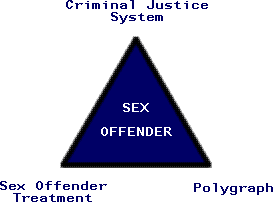Assessment and Orientation
- Identified sexual offenders receive a psychosexual needs assessment, including an assessment of their risk level.
- Offenders receive a brief orientation relating to the benefits of treatment and what they can expect as a result of participating in the treatment process.
Phase II
Phase II: Risk Based Treatment and Psycho-educational Programming
This phase of the program is mandated for all offenders, and is conducted primarily at three delivery sites:
- New Castle Correctional Facility (adult male offenders)
- Pendleton Juvenile Correctional Facility (male juvenile offenders)
- Rockville Correctional Facility (adult female offenders)
INSOMM Program offenders are mandated to participate in Phase II, which includes:
- Risk based treatment program targeting risk factors identified during Phase I (Assessment and Orientation)
- 40-hour minimum low risk treatment programming
- 75-hour minimum moderate risk treatment programming
- 125-hour minimum high intensity treatment
Prior to release all sex offenders are required to participate in the INSOMM Re-Entry Program.
Phase III: Community Monitoring
This phase is mandatory for all INSOMM Program parolees with sex offender parole stipulations.
Phase III of the INSOMM Program is designed to support and optimize the community reintegration process for INSOMM offenders, and includes:
- Multi-agency collaboration – INSOMM Program District Coordinators, Specialized Parole Agents, and a network of credentialed sex offender treatment providers and polygraph examiners.
- Monitoring each parolee’s participation in community-based treatment and adherence to parole stipulations.
- Maintaining a tracking system to monitor outcomes, and tracking re-offenses by type.
- Sharing knowledge of sex offenders within a Containment Team.
- Use of Global Positioning Satellite (GPS) to monitor select offenders.
The Containment Approach
The containment approach allows for and encourages communication among the agencies involved in monitoring and managing sex offenders in the community. This promotes wider coverage of the sex offender’s movement, compliance with Sex Offender Parole Stipulations, and socialization back into the community. Open communication among the agencies also helps to counteract potential manipulations, denial, and secretiveness that can characterize sexual offending behavior patterns.
Each member of the Containment Team brings its own expertise and specific information about a given sex offender. All are valuable in creating a more thorough understanding of risk factors and individual needs. In this approach, the INSOMM Program District Coordinators, the Indiana Department of Correction, Indiana Parole Board, Indiana Court Systems, other state agencies, local law enforcement, community agencies, and INSOMM Program credentialed treatment providers and polygraph examiners work together to monitor compliance with post-release conditions of supervision, including sex offender-specific treatment, regular polygraph testing, and other services and supports.
Regular Containment Team meetings include the INSOMM Program network treatment provider, polygraph examiner, specialized parole agent, and the INSOMM Program District Coordinator. The Containment Team approach enhances community safety and is an important element to assist in reducing recidivism in Indiana.
